Andrew Silva
SimCoachCorpus: A naturalistic dataset with language and trajectories for embodied teaching
Sep 18, 2025Abstract:Curated datasets are essential for training and evaluating AI approaches, but are often lacking in domains where language and physical action are deeply intertwined. In particular, few datasets capture how people acquire embodied skills through verbal instruction over time. To address this gap, we introduce SimCoachCorpus: a unique dataset of race car simulator driving that allows for the investigation of rich interactive phenomena during guided and unguided motor skill acquisition. In this dataset, 29 humans were asked to drive in a simulator around a race track for approximately ninety minutes. Fifteen participants were given personalized one-on-one instruction from a professional performance driving coach, and 14 participants drove without coaching. \name\ includes embodied features such as vehicle state and inputs, map (track boundaries and raceline), and cone landmarks. These are synchronized with concurrent verbal coaching from a professional coach and additional feedback at the end of each lap. We further provide annotations of coaching categories for each concurrent feedback utterance, ratings on students' compliance with coaching advice, and self-reported cognitive load and emotional state of participants (gathered from surveys during the study). The dataset includes over 20,000 concurrent feedback utterances, over 400 terminal feedback utterances, and over 40 hours of vehicle driving data. Our naturalistic dataset can be used for investigating motor learning dynamics, exploring linguistic phenomena, and training computational models of teaching. We demonstrate applications of this dataset for in-context learning, imitation learning, and topic modeling. The dataset introduced in this work will be released publicly upon publication of the peer-reviewed version of this paper. Researchers interested in early access may register at https://tinyurl.com/SimCoachCorpusForm.
Timing the Message: Language-Based Notifications for Time-Critical Assistive Settings
Sep 09, 2025Abstract:In time-critical settings such as assistive driving, assistants often rely on alerts or haptic signals to prompt rapid human attention, but these cues usually leave humans to interpret situations and decide responses independently, introducing potential delays or ambiguity in meaning. Language-based assistive systems can instead provide instructions backed by context, offering more informative guidance. However, current approaches (e.g., social assistive robots) largely prioritize content generation while overlooking critical timing factors such as verbal conveyance duration, human comprehension delays, and subsequent follow-through duration. These timing considerations are crucial in time-critical settings, where even minor delays can substantially affect outcomes. We aim to study this inherent trade-off between timeliness and informativeness by framing the challenge as a sequential decision-making problem using an augmented-state Markov Decision Process. We design a framework combining reinforcement learning and a generated offline taxonomy dataset, where we balance the trade-off while enabling a scalable taxonomy dataset generation pipeline. Empirical evaluation with synthetic humans shows our framework improves success rates by over 40% compared to methods that ignore time delays, while effectively balancing timeliness and informativeness. It also exposes an often-overlooked trade-off between these two factors, opening new directions for optimizing communication in time-critical human-AI assistance.
Shared Autonomy for Proximal Teaching
Feb 27, 2025Abstract:Motor skill learning often requires experienced professionals who can provide personalized instruction. Unfortunately, the availability of high-quality training can be limited for specialized tasks, such as high performance racing. Several recent works have leveraged AI-assistance to improve instruction of tasks ranging from rehabilitation to surgical robot tele-operation. However, these works often make simplifying assumptions on the student learning process, and fail to model how a teacher's assistance interacts with different individuals' abilities when determining optimal teaching strategies. Inspired by the idea of scaffolding from educational psychology, we leverage shared autonomy, a framework for combining user inputs with robot autonomy, to aid with curriculum design. Our key insight is that the way a student's behavior improves in the presence of assistance from an autonomous agent can highlight which sub-skills might be most ``learnable'' for the student, or within their Zone of Proximal Development. We use this to design Z-COACH, a method for using shared autonomy to provide personalized instruction targeting interpretable task sub-skills. In a user study (n=50), where we teach high performance racing in a simulated environment of the Thunderhill Raceway Park with the CARLA Autonomous Driving simulator, we show that Z-COACH helps identify which skills each student should first practice, leading to an overall improvement in driving time, behavior, and smoothness. Our work shows that increasingly available semi-autonomous capabilities (e.g. in vehicles, robots) can not only assist human users, but also help *teach* them.
Dreaming to Assist: Learning to Align with Human Objectives for Shared Control in High-Speed Racing
Oct 14, 2024Abstract:Tight coordination is required for effective human-robot teams in domains involving fast dynamics and tactical decisions, such as multi-car racing. In such settings, robot teammates must react to cues of a human teammate's tactical objective to assist in a way that is consistent with the objective (e.g., navigating left or right around an obstacle). To address this challenge, we present Dream2Assist, a framework that combines a rich world model able to infer human objectives and value functions, and an assistive agent that provides appropriate expert assistance to a given human teammate. Our approach builds on a recurrent state space model to explicitly infer human intents, enabling the assistive agent to select actions that align with the human and enabling a fluid teaming interaction. We demonstrate our approach in a high-speed racing domain with a population of synthetic human drivers pursuing mutually exclusive objectives, such as "stay-behind" and "overtake". We show that the combined human-robot team, when blending its actions with those of the human, outperforms the synthetic humans alone as well as several baseline assistance strategies, and that intent-conditioning enables adherence to human preferences during task execution, leading to improved performance while satisfying the human's objective.
Interpretable Reinforcement Learning for Robotics and Continuous Control
Nov 16, 2023Abstract:Interpretability in machine learning is critical for the safe deployment of learned policies across legally-regulated and safety-critical domains. While gradient-based approaches in reinforcement learning have achieved tremendous success in learning policies for continuous control problems such as robotics and autonomous driving, the lack of interpretability is a fundamental barrier to adoption. We propose Interpretable Continuous Control Trees (ICCTs), a tree-based model that can be optimized via modern, gradient-based, reinforcement learning approaches to produce high-performing, interpretable policies. The key to our approach is a procedure for allowing direct optimization in a sparse decision-tree-like representation. We validate ICCTs against baselines across six domains, showing that ICCTs are capable of learning policies that parity or outperform baselines by up to 33% in autonomous driving scenarios while achieving a 300x-600x reduction in the number of parameters against deep learning baselines. We prove that ICCTs can serve as universal function approximators and display analytically that ICCTs can be verified in linear time. Furthermore, we deploy ICCTs in two realistic driving domains, based on interstate Highway-94 and 280 in the US. Finally, we verify ICCT's utility with end-users and find that ICCTs are rated easier to simulate, quicker to validate, and more interpretable than neural networks.
FedPC: Federated Learning for Language Generation with Personal and Context Preference Embeddings
Oct 07, 2022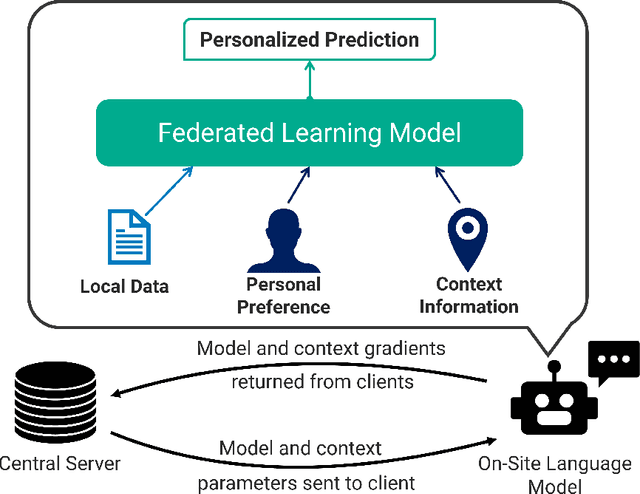

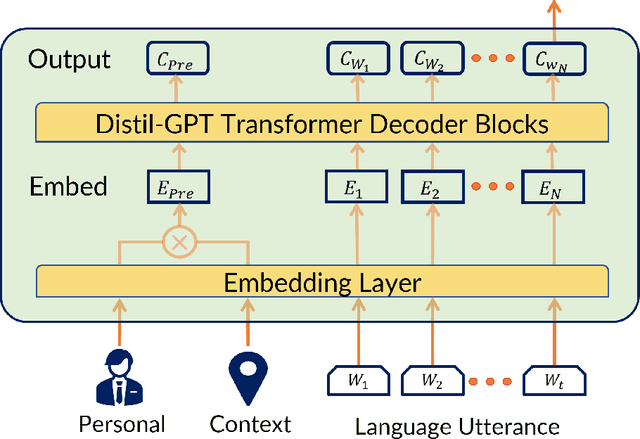
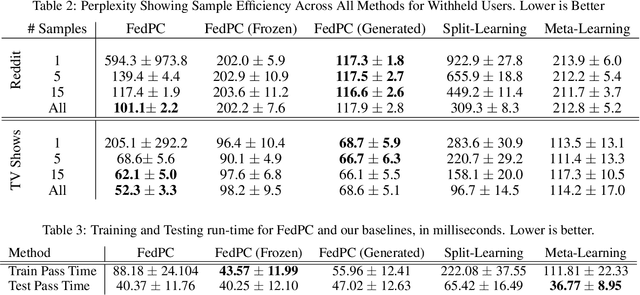
Abstract:Federated learning is a training paradigm that learns from multiple distributed users without aggregating data on a centralized server. Such a paradigm promises the ability to deploy machine-learning at-scale to a diverse population of end-users without first collecting a large, labeled dataset for all possible tasks. As federated learning typically averages learning updates across a decentralized population, there is a growing need for personalization of federated learning systems (i.e conversational agents must be able to personalize to a specific user's preferences). In this work, we propose a new direction for personalization research within federated learning, leveraging both personal embeddings and shared context embeddings. We also present an approach to predict these ``preference'' embeddings, enabling personalization without backpropagation. Compared to state-of-the-art personalization baselines, our approach achieves a 50\% improvement in test-time perplexity using 0.001\% of the memory required by baseline approaches, and achieving greater sample- and compute-efficiency.
Multi-UAV Planning for Cooperative Wildfire Coverage and Tracking with Quality-of-Service Guarantees
Jun 21, 2022Abstract:In recent years, teams of robot and Unmanned Aerial Vehicles (UAVs) have been commissioned by researchers to enable accurate, online wildfire coverage and tracking. While the majority of prior work focuses on the coordination and control of such multi-robot systems, to date, these UAV teams have not been given the ability to reason about a fire's track (i.e., location and propagation dynamics) to provide performance guarantee over a time horizon. Motivated by the problem of aerial wildfire monitoring, we propose a predictive framework which enables cooperation in multi-UAV teams towards collaborative field coverage and fire tracking with probabilistic performance guarantee. Our approach enables UAVs to infer the latent fire propagation dynamics for time-extended coordination in safety-critical conditions. We derive a set of novel, analytical temporal, and tracking-error bounds to enable the UAV-team to distribute their limited resources and cover the entire fire area according to the case-specific estimated states and provide a probabilistic performance guarantee. Our results are not limited to the aerial wildfire monitoring case-study and are generally applicable to problems, such as search-and-rescue, target tracking and border patrol. We evaluate our approach in simulation and provide demonstrations of the proposed framework on a physical multi-robot testbed to account for real robot dynamics and restrictions. Our quantitative evaluations validate the performance of our method accumulating 7.5x and 9.0x smaller tracking-error than state-of-the-art model-based and reinforcement learning benchmarks, respectively.
FedEmbed: Personalized Private Federated Learning
Feb 18, 2022



Abstract:Federated learning enables the deployment of machine learning to problems for which centralized data collection is impractical. Adding differential privacy guarantees bounds on privacy while data are contributed to a global model. Adding personalization to federated learning introduces new challenges as we must account for preferences of individual users, where a data sample could have conflicting labels because one sub-population of users might view an input positively, but other sub-populations view the same input negatively. We present FedEmbed, a new approach to private federated learning for personalizing a global model that uses (1) sub-populations of similar users, and (2) personal embeddings. We demonstrate that current approaches to federated learning are inadequate for handling data with conflicting labels, and we show that FedEmbed achieves up to 45% improvement over baseline approaches to personalized private federated learning.
Learning Interpretable, High-Performing Policies for Continuous Control Problems
Feb 04, 2022
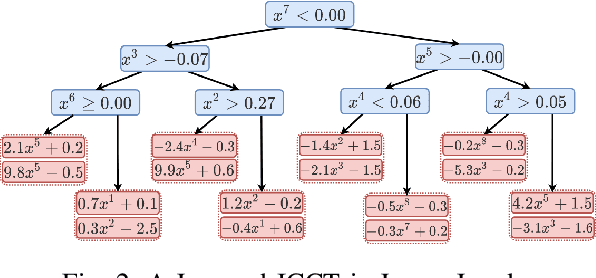
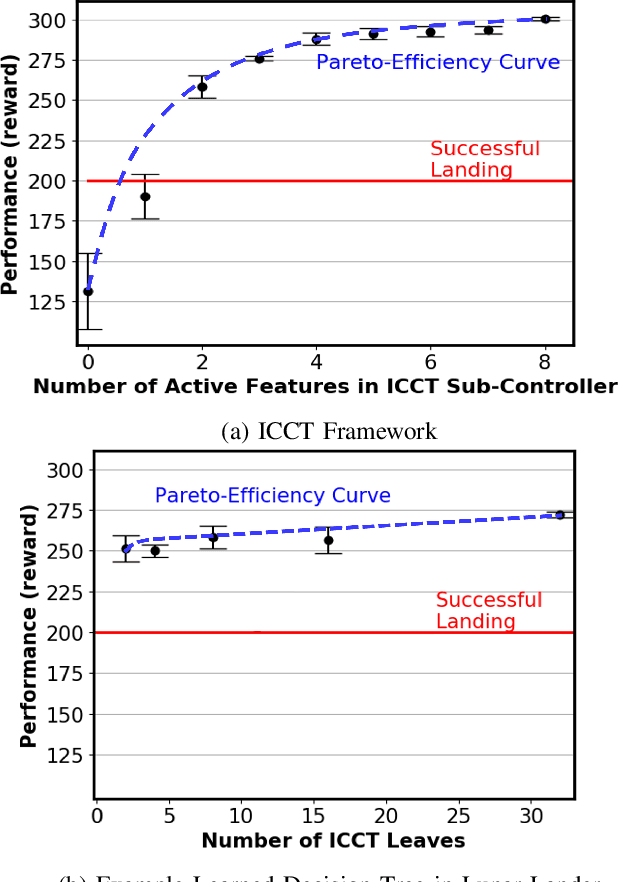

Abstract:Gradient-based approaches in reinforcement learning (RL) have achieved tremendous success in learning policies for continuous control problems. While the performance of these approaches warrants real-world adoption in domains, such as in autonomous driving and robotics, these policies lack interpretability, limiting deployability in safety-critical and legally-regulated domains. Such domains require interpretable and verifiable control policies that maintain high performance. We propose Interpretable Continuous Control Trees (ICCTs), a tree-based model that can be optimized via modern, gradient-based, RL approaches to produce high-performing, interpretable policies. The key to our approach is a procedure for allowing direct optimization in a sparse decision-tree-like representation. We validate ICCTs against baselines across six domains, showing that ICCTs are capable of learning interpretable policy representations that parity or outperform baselines by up to 33$\%$ in autonomous driving scenarios while achieving a $300$x-$600$x reduction in the number of policy parameters against deep learning baselines.
Multimodal Punctuation Prediction with Contextual Dropout
Feb 12, 2021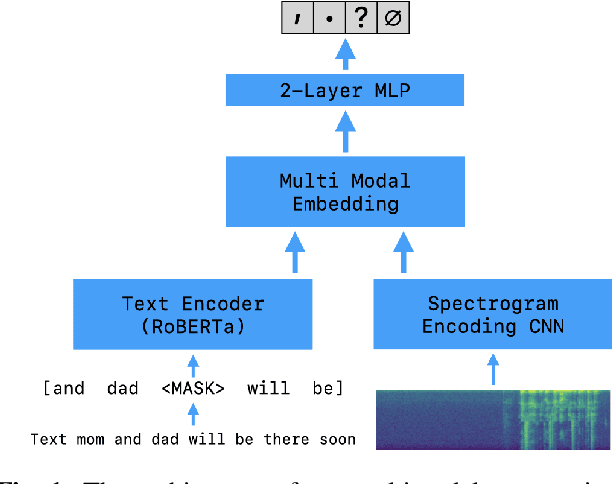

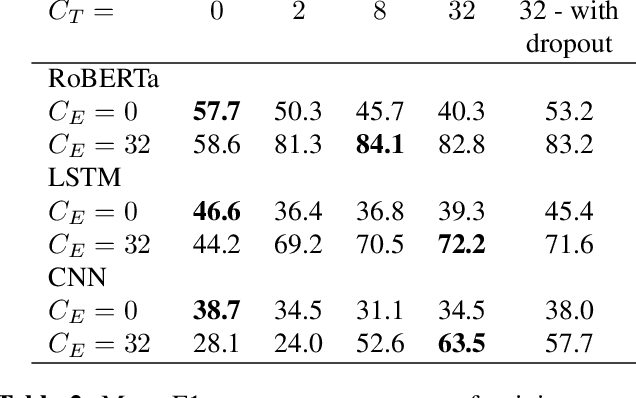
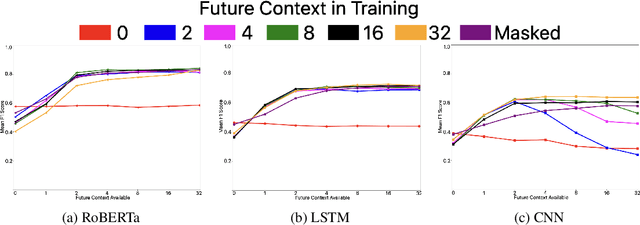
Abstract:Automatic speech recognition (ASR) is widely used in consumer electronics. ASR greatly improves the utility and accessibility of technology, but usually the output is only word sequences without punctuation. This can result in ambiguity in inferring user-intent. We first present a transformer-based approach for punctuation prediction that achieves 8% improvement on the IWSLT 2012 TED Task, beating the previous state of the art [1]. We next describe our multimodal model that learns from both text and audio, which achieves 8% improvement over the text-only algorithm on an internal dataset for which we have both the audio and transcriptions. Finally, we present an approach to learning a model using contextual dropout that allows us to handle variable amounts of future context at test time.
 Add to Chrome
Add to Chrome Add to Firefox
Add to Firefox Add to Edge
Add to Edge